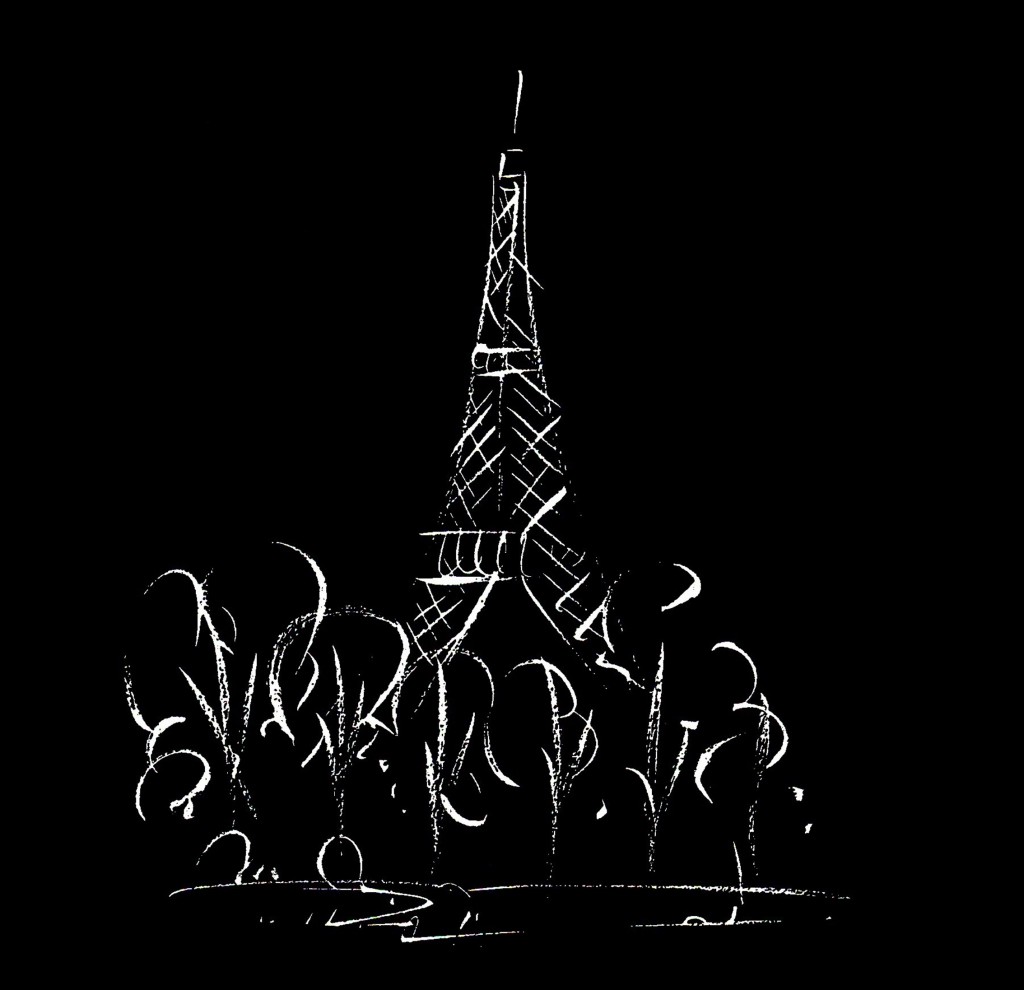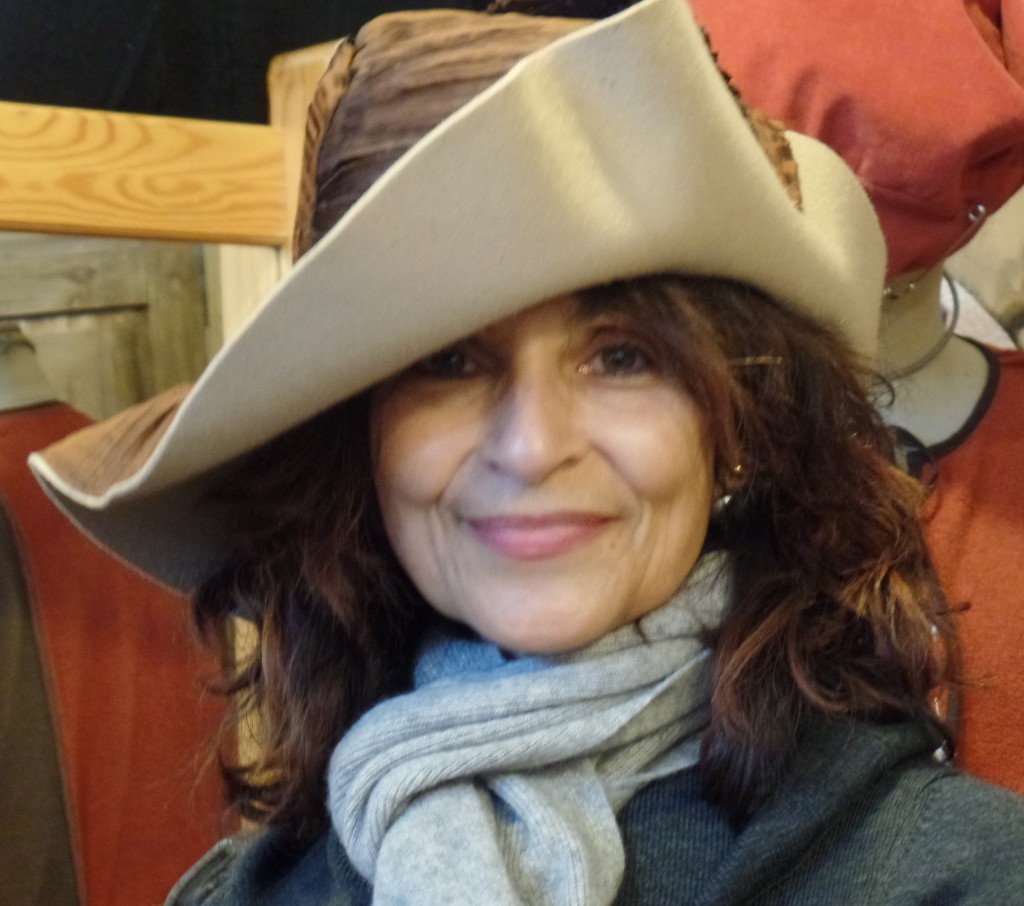Art, Tragedy, and Bearing Witness (Paris, November 13, 2015)
22 Sunday Nov 2015
A Woman’s Paris™ in Cultures
Tags
Charlie Hebdo Paris 2015, International Holocaust Memorial Day, Paris November 13 2015
Share it
 “What role does art play in the every-growing divide between cultures and religions?” by Lilianne Milgrom. ©2015 Lilianne Milgrom. Published with permission. All rights reserved. Excerpt from a presentation by Lilianne Milgrom on the occasion of International Holocaust Memorial Day, April, 2015.
“What role does art play in the every-growing divide between cultures and religions?” by Lilianne Milgrom. ©2015 Lilianne Milgrom. Published with permission. All rights reserved. Excerpt from a presentation by Lilianne Milgrom on the occasion of International Holocaust Memorial Day, April, 2015.
Art can and does play many roles in society: provocateur, bridge, propaganda and healer. I would like to start my talk with an incident that most of you may recall quite vividly: January 7th, 2015.
Twelve people were killed by gunmen in an attack against the Paris office of the satirical newspaper Charlie Hebdo. Their crime? Offending Islam by drawing cartoon depictions of the Prophet Muhammad. According to mainstream Islamic tradition, any physical depiction of the Prophet—even a respectful one—is considered blasphemous.
It is difficult for most westerners to believe that the catalyst for the recent terrorist attacks that turned the lights out in the most scintillating and luminous of cities was a series of lampooning cartoons. Attacking freedom of speech—a fundamental pillar of French culture—touched a deep nerve and galvanized the entire country, bringing close to four million people out into the streets in a show of support for freedom of expression.
The reason I begin my presentation with this tragic incident is that aside from blasting freedom of expression to the forefront, the attack also underscored two important facts: The first being Art’s capacity to unleash enormously powerful passions (and yes, cartoons are an art form), and the second being the ever-widening rift and clash between religions and cultures.
Charlie Hebdo epitomizes the French penchant for leftist, secularist polemic that spares no one from its biting satire. Many people in France did not even approve of the magazine’s content, but no one disputed that they were democratic in their unwavering scrutiny and crude lampoon. What happened at Charlie Hebdo demonstrates the power of Art to provoke and inflame.
But Art can also be used as a tool to promote reflection, initiate dialogue and unify. These goals were the guiding principles behind The Bridge, a multicultural exhibition in Paris that I feel honored to have co-curated and participated in this past February.
Following the shocking events in Paris, this exhibition could not have come at a more timely moment in the city’s post-traumatic healing process.
Entitled The Bridge (Le Pont), this exhibition gathered together 48 renowned artists of Middle Eastern, Persian and Jewish faiths whose paintings express their individual and unique interpretations of what “bridges” us together and how we can forge a future of trust and mutual respect.
The exhibition was held at the historic Saint–Germain–des–Prés and was organized by CARAVAN, a peace-building arts NGO whose founder, the Rev. Paul-Gordon Chandler, believes in using the Arts to spread the message of amity between faiths and cultures allowing for unexpected friendships to blossom.
By bringing together 48 outstanding artists of Muslim, Christian and Jewish backgrounds, The Bridge acted as an encounter point for diverse communities to build bridges of trust and understanding. The artists came from 15 different countries including Egypt, Tunisia, Iran, Jordan, Paris, London, and the United States.
The 48 works of art in this exhibit are a metaphor for the infinite ways in which peace and co-existence can be imagined. It matters not that these paths differ one from the other. They remind us that although we may not always be marching in step, we are still capable of taking a step at a time together towards a more hopeful future. One cannot lose hope.
I personally feel a responsibility to create art that tackles social injustice. It is not art one can hang over the sofa nor is it a money-maker, that’s for sure. I am driven to create artwork that may make a difference, one person at a time.
So in answer to my own question about the role of art in the ever growing divide between cultures and religions, Erica Jong has put it much more eloquently than I ever could, and I quote:
“We might ask what power art can have in general. Did Goya stop cruelty in his time, or Picasso in his? No. But the role of the artist in raising our consciousness and bearing witness is essential. The artist makes us open our eyes to our own cruelty, our own passivity, our own indifference.” —Erica Jong
Within minutes of being invited to participate in The Bridge exhibition, the words of a popular Hebrew song began playing in mind: Kol ha’olam kulo gesher tzar me’od, v’haikar lo lefached. (The whole world is a narrow bridge. The main thing to remember is not to be afraid). I was surprised to learn that these words are attributed to the rabbinical sage, Rabbi Nachman of Bratislav, born in Ukraine in the 18th century and the great-grandson of the founder of Hassidism, a branch of Orthodox Judaism.
 These few words have survived intact over the centuries yet they capture the essence of this exhibition. If ever there has there was a time to reach across cultures, religions, borders and peoples in order to pull the world back from the brink, it is now.
These few words have survived intact over the centuries yet they capture the essence of this exhibition. If ever there has there was a time to reach across cultures, religions, borders and peoples in order to pull the world back from the brink, it is now.
My painting “Narrow Bridge” is a contemporary interpretation that encourages us to conquer our fears and reach a hand across that narrow bridge without looking down.
Footnote: It seems as if each atrocity and new attack eclipses the one that came before with greater and greater barbarity and senseless loss of life. We have to believe there will be an end to this nightmare. My own personal blog post about the most recent attack conveys my determination to cling to that hope. —Lilianne Milgrom
Acknowledgements: Lee Murphy, student of new media communications at the University of Minnesota-Twin Cities and copy editor for A Woman’s Paris.
 Lilianne Milgrom is an artist and writer on the arts. She is Paris-born, grew up in Australia, lived for extensive periods in Israel, and currently resides in Washington DC. Her diverse background has influenced both her work and her outlook on life. She exhibits broadly in regional and international exhibitions and her works can be found in private and institutional collections around the world. For more information about Lilianne Milgrom visit: (Website) (WordPress)
Lilianne Milgrom is an artist and writer on the arts. She is Paris-born, grew up in Australia, lived for extensive periods in Israel, and currently resides in Washington DC. Her diverse background has influenced both her work and her outlook on life. She exhibits broadly in regional and international exhibitions and her works can be found in private and institutional collections around the world. For more information about Lilianne Milgrom visit: (Website) (WordPress)
From A Woman’s Paris®:
How horrible the terrorist attacks on Paris on the 13th of November, 2015! We offer our sincere condolences to Paris. Our heart goes out to those who have suffered in Paris and communities worldwide; we are deeply saddened by the loss.
Liberté, égalité, fraternité “liberty, equality, fraternity,” is the national motto of France and the Republic of Haiti. How true this is to our experiences with French friends, expatriates and colleagues living in France, and people from around the world.
Take care. Be well. Tell us that you and your family and friends are safe.
Love to all,
Barbara Redmond
Publisher, AWomansParis.com
A Woman’s Paris®
Text copyright ©2015 Lilianne Milgrom. All rights reserved.
Illustrations copyright ©Barbara Redmond. All rights reserved.
barbara@awomansparis.com


1 comments
Holly Augustine said:
November 22, 2015 at 7:58 pm
Chere Barbara – Thank you for the lovely words and sentiments. It is my sincere hope that we will all heal from these recent atrocities and that understanding is “Bridged” across the cultures. Take care. Holly Augustine